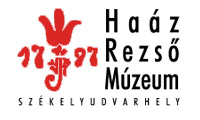Kovács Petronella (szerk.): Isis - Erdélyi magyar restaurátor füzetek 15. (Székelyudvarhely, 2015)
Mester Éva: Az egyszerű geometrikus elosztású ablakok védelme és megőrzésük fontossága
Based on the studied recipes it can be concluded, that while for gold varnishes binders of mixtures of oils and resins were used, for other colored glazes mainly oils were added. The oils-resin mixtures are mostly complex binders, which consist mainly of resins such as sandarac, mastic, gum lac (shellac) and amber and oils like linseedoil, walnut oil, poppy seed oil etc. The work contained as well the reconstruction of four historical recipes: two blue glazes and two gold varnishes. The studied recipes present numerous similarities of the layer structure, use of materials and the units of measure. In some cases the recipes were borrowed, copied from an author to another. In the case of the gold varnishes, the recipes are generally complex, with numerous components. The recipes of Antal Ferencz, although they represent more simple variations, based on the technique, the used materials and their designation (German terms) are fitting in the line of recipe analogies. The fact that these recipes were realized is demonstrated by the numerous practical and technical advices and remarks given by the authors. The research, discover and elaboration of other Transylvanian and Romanian analogies, which would lead to the enlargement of the knowledge about the glazing technique, remains an important task. Traslated by: Júlia Tövissi Levente Domokos - István Sajó Investigation of pigments found on painted furniture deriving from the area around Udvarhely (Odorheiu) According to ethnographers’ publications the painter cabinet-makers from Vargyas (Vârghiş) and from the Homoród (Homorod) Valley prepared the pigments they used themselves, usually from local raw materials. One of the aims of the research about the painting technology of the furniture from the region of Udvarhely has been the identification of the quarries of paint earth based on the ethnographic and geological reports, and the specification of the minerals and raw materials of mineral origin present locally which are suitable for preparation of pigments. In the course of the research it turned out that the identification of the one-time quarries in the environment which had been changed during times was almost impossible. Even if not from the places mentioned by the earlier publications but it was possible to collect materials suitable for preparation of pigments. Based on that raw materials found in the surroundings of Homoródalmás (Mereşti,) and Vargyas a quite rich range of colours could be made out, which covers the range of colours except yellow and blue used by the painter cabinet-makers worked at that area one-time. Whether the pigments they used were prepared by themselves or not is also a question. Although most of the raw materials could be got from natural exposures, others could only be searched by the contemporary mining methods. So presumably the cabinet-makers bought pigments from merchants as well. The other aim of the research was the examination of samples taken from as many painted furniture as possible to get more information about the use of pigments of old times. The objects chosen for the research were made between 1630 and 1904, most of them dated. They were used partly for ecclesiastical partly for secular purposes. Present study publishes the results of the X-ray diffraction analysis of the samples. Based on the samples examined until the middle of the 19thcentury mainly pigments with mineral or other ‘natural’ origin were used. The pigments made by the industry (chrome yellow, emerald green, zinc white) appeared only in the second half of the 19th century. Red is most often cinnabar or minium, even used together. Orpiment was added to them in many cases because it makes the painted surface shiny. For orange minium was used. Yellow colours were painted with orpiment but in the analysed samples realgar could be found as well. In some of the yellow colours only gypsum could be found, the colour was produced with some kind of vegetable dyestuff. In the second half of the 19th century the chrome yellow appeared and substituted the formerly used mineral pigments. The green colours were made with orpiment until the middle of the 19th century, mixed with black or with indigo precipitated onto inorganic carrier. In the second half of the 19th century the application of emerald green can be seen as well. It was possible to identify just a few blue colours; most of them were indigo or Prussian blue. The usage of organic dyes was spread already in the 16th century but in the 17th and 18th century it was very frequent. From the middle of the 19th century onwards appeared the yellows, blues and greens on the painted furniture which were more resistant for UV radiation. Black pigments couldn’t be identified by X-ray diffraction; those are probably mainly carbon blacks. As white pigments anhydrite or lead white were used, but in one case zinc white could be found in paint from the beginning of the 20th century. The X-ray diffraction is not suitable for determination of the place of origin of the pigments identified by the authors and listed above. To get more information about whether the local painter cabinet-makers used pigments originated from the surrounding area or not, further research and investigation in the field of natural sciences and about social sciences will be necessary. Traslated by: Márta Kissnc Bendefy Rebeka Nagy The conservation of the fragments of the burial wear of Countess Erzsébet Batthyány Erzsébet Batthyány was buried in 1674, in the crypt of St. Martin’s Church in Szombathely. The tomb was robbed many times over the centuries, with the result that the 106
